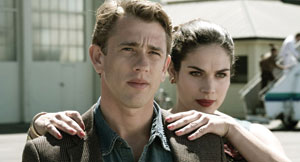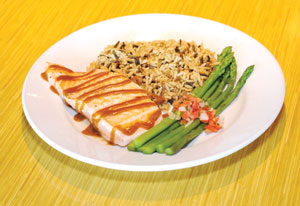Holocaust survivor is one of a trio of heroines in Dutch film ‘Bride Flight’
 “Bride Flight” is a lavish romantic epic spanning 55 years that tells the personal stories of three plucky Dutch heroines from different backgrounds, whose lives are forever changed when they emigrate from post-World War II Holland to New Zealand. The movie opens tomorrow (Friday, Aug. 5) exclusively for a limited engagement at the Glenwood Red Bridge.
“Bride Flight” is a lavish romantic epic spanning 55 years that tells the personal stories of three plucky Dutch heroines from different backgrounds, whose lives are forever changed when they emigrate from post-World War II Holland to New Zealand. The movie opens tomorrow (Friday, Aug. 5) exclusively for a limited engagement at the Glenwood Red Bridge.
The movie begins with 79-year-old Frank de Rooy (Rutger Hauer in his first role in a full-length Dutch motion picture after 28 years) sampling a new batch of red wine at his Druivebloed winery. The name comes from the Bible and means “Land of grapes.” On his way back home, Frank loses control of his red jeep. He swerves and veers off the road crashing into the vineyard. He is having a heart attack. He gazes at a photo of a young girl dangling from his key ring.
The movie flashes back to a major journalistic event in 1953. Archival black and white newsreel footage announces that Holland has taken up the challenge of an air race attempting to break the record 1946 flying time from London to Christchurch, New Zealand. The passengers aboard the KLM airplane bearing the moniker of “The Flying Dutchman” are fleeing job and housing problems resulting from a devastating flood disaster.
A 25-year old Frank (Waldemar Torenstra) is onboard. His dream is to capitalize on his college agricultural degree and purchase land for farming. He meets three young women joining their fiancés, who went on ahead of them to start a new life in this unknown land.
Ash blonde-haired Ada (Karina Smulders) is sitting next to Frank in the window seat. She is a shy, sensual farm girl taking her first airplane ride. Across the aisle, dark brunette Esther (Anna Drijver) and light brown Marjorie (Elise Schaap) are sitting together. Esther is a sophisticated extrovert, who aspires to be a fashion designer. She is Jewish, suffering from survivor guilt having lost her parents and brother 10 years ago in the Holocaust. The friendly and outgoing Marjorie wants to have a big family.
The three women bond on the long plane flight that covers a distance of more than 20,000 kilometers. When the plane lands in New Zealand, the three women are greeted by their prospective grooms. They all go their separate ways, but their paths cross in key milestone events over the years. The handsome Frank plays a major role throughout their lives.
The movie initially flashes back and forth between the titular transcontinental plane trip and 2008 when the three women, now in their 70s, reunite for Frank’s funeral. The movie is based on the best-selling novel by Mareke van der Pol, who also wrote the screenplay.
Director Ben Sombogaart doles out surprise revelations steeped in irony with a multi-layered approach.
The movie is sad, hopeful and uplifting.
There is a forbidden love affair, an impossible maternal choice, a secret pact sealed with a promise, a near tragedy and selfish betrayal.
Esther’s Jewish background is an integral part of the story. A family heirloom menorah and freshly-made potato latkes, both Chanukah staples, play a pivotal part in the story.
The movie’s strengths include the gorgeous looking cinematography, meticulous art direction capturing the look of the ‘50s and ‘60s, the sparkling scenic vistas of New Zealand and the period costume designs. The talented, personable and very appealing cast shines with emotional acting that wins over the audience.
This sprawling drama is one of the most expensive Dutch films ever made. It won the Audience Award at the Palm Beach Jewish Film Festival. It was also honored as Best Feature Film, Best Actress (Smulders), Best Director, Best Screenplay and Best Cinematography at the Newport Beach Film Festival.
The dialogue is partially in Dutch with short, easy-to-read English subtitles. The movie is rated R for a strong sex scene and some graphic nudity. It has a running time of 130 minutes and merits my rating of GOOD (3 stars out of 4).



 Locally-owned Sunset Grill, opened in 2004, has the feel of an Americanized Mexican restaurant — with its lime green canvases of beachy palm tree settings on one wall, bright blue drawings of leaves on another, and the vaguely Mexicanized menu. To its credit — and sometimes to its detriment — the restaurant strives to be more than that.
Locally-owned Sunset Grill, opened in 2004, has the feel of an Americanized Mexican restaurant — with its lime green canvases of beachy palm tree settings on one wall, bright blue drawings of leaves on another, and the vaguely Mexicanized menu. To its credit — and sometimes to its detriment — the restaurant strives to be more than that.